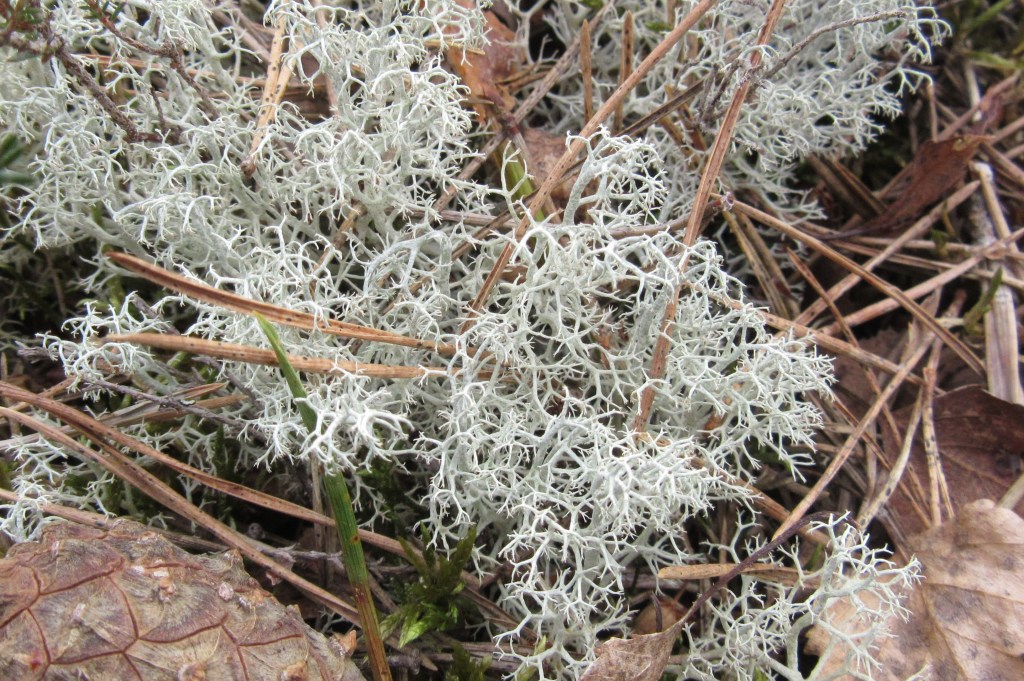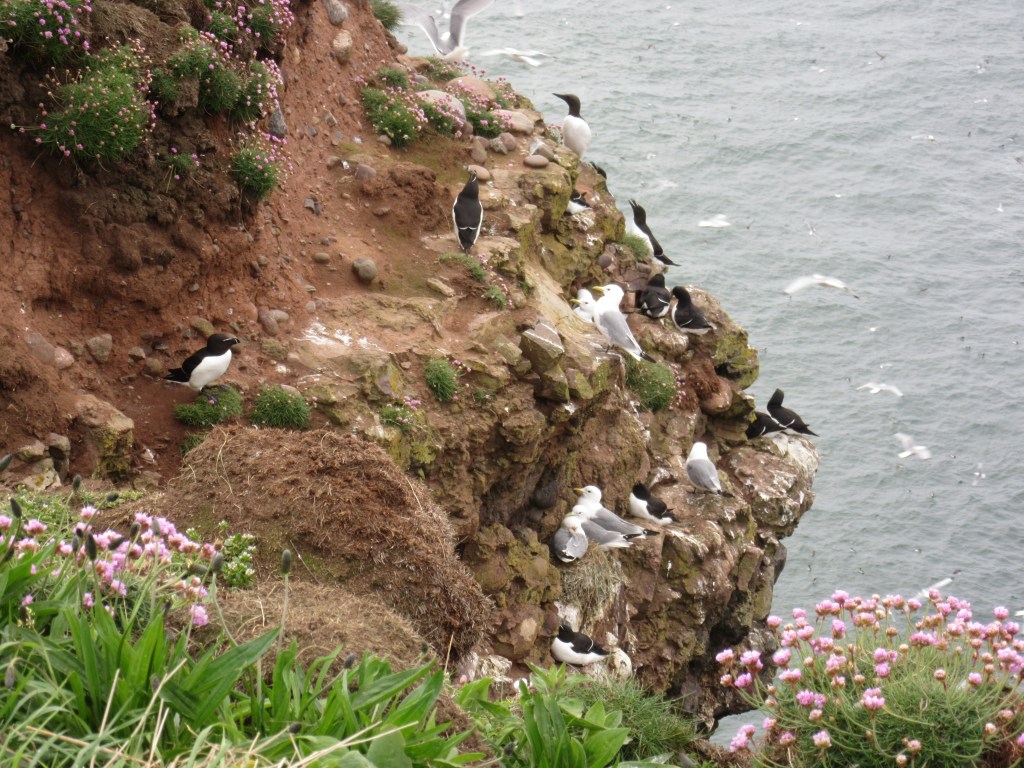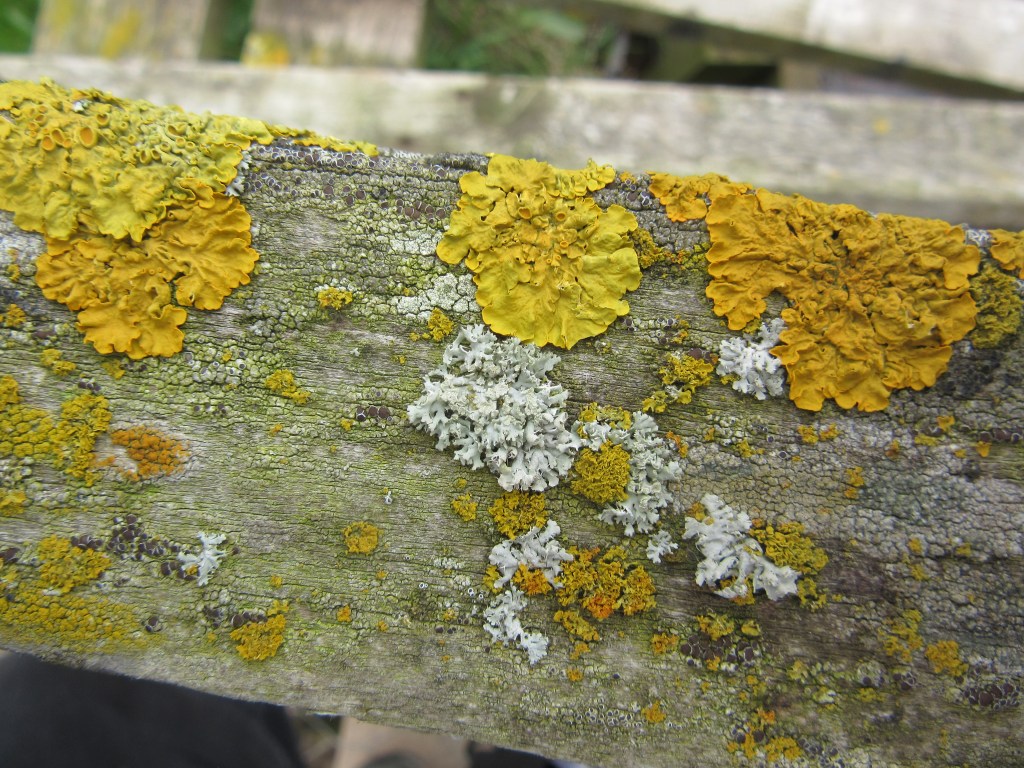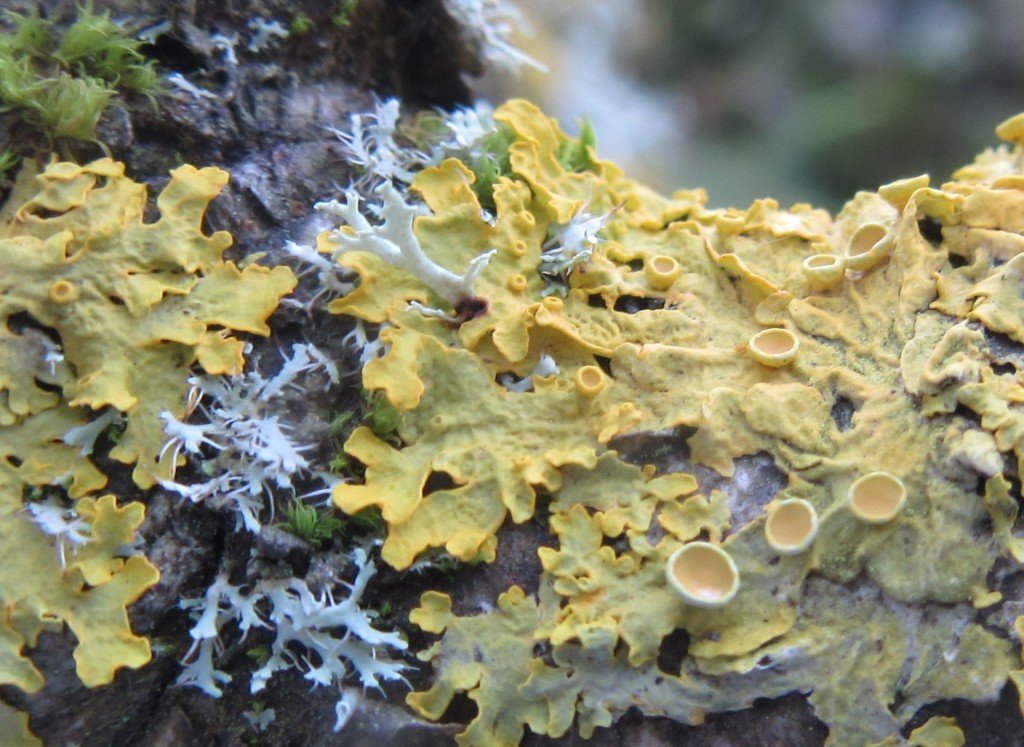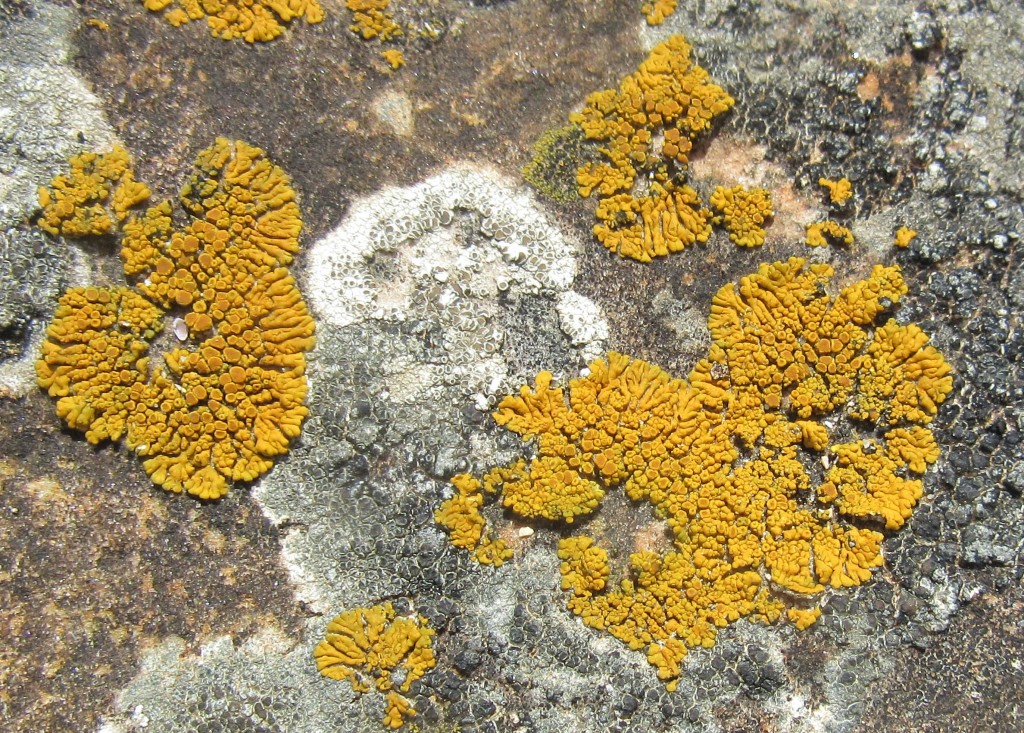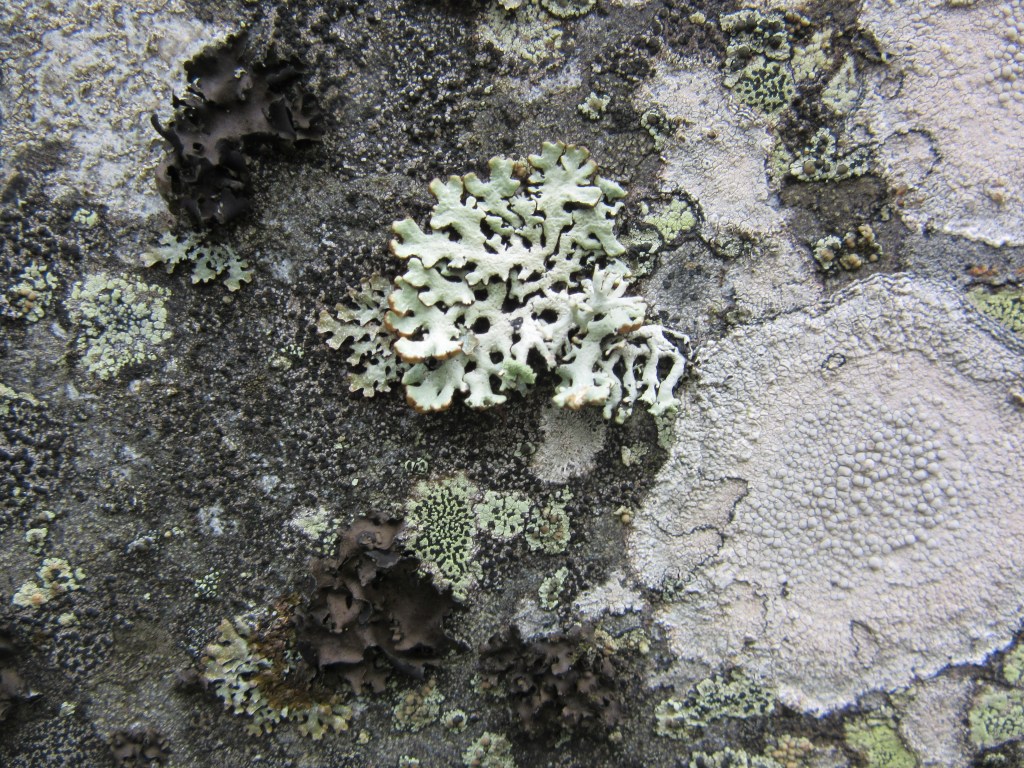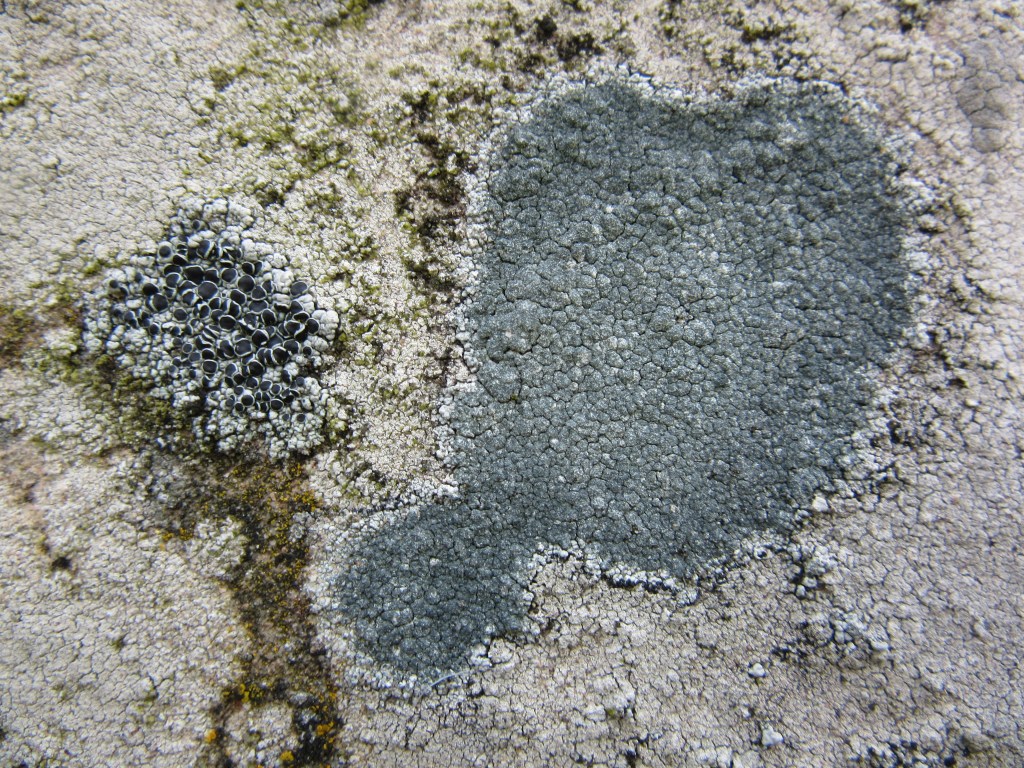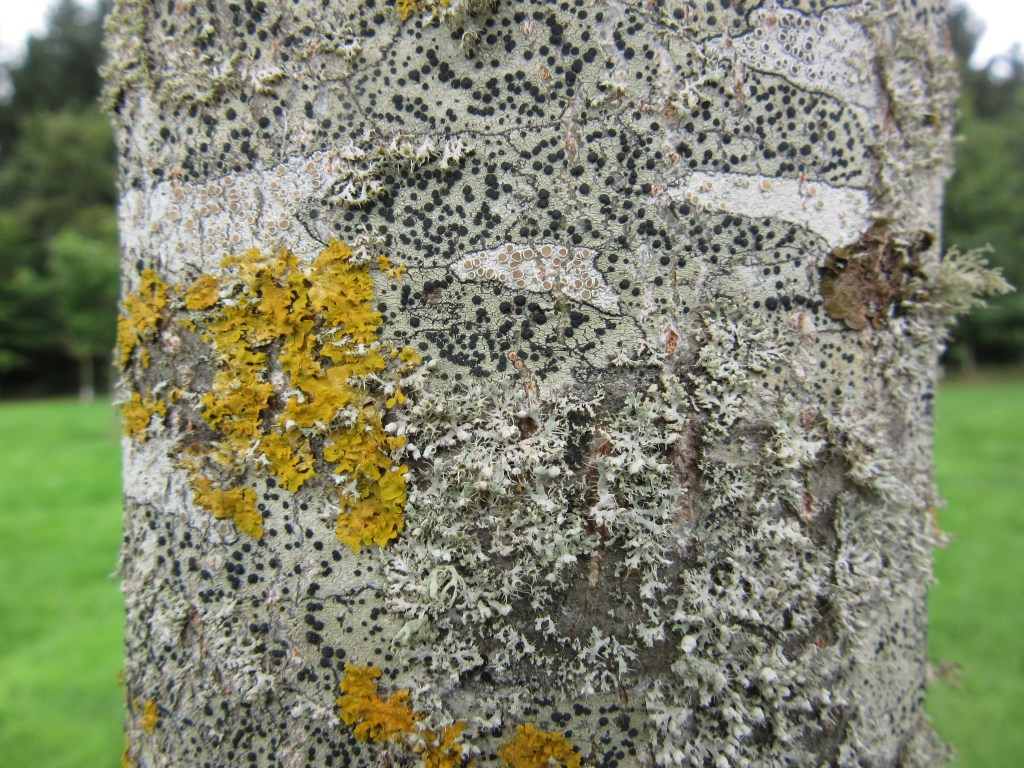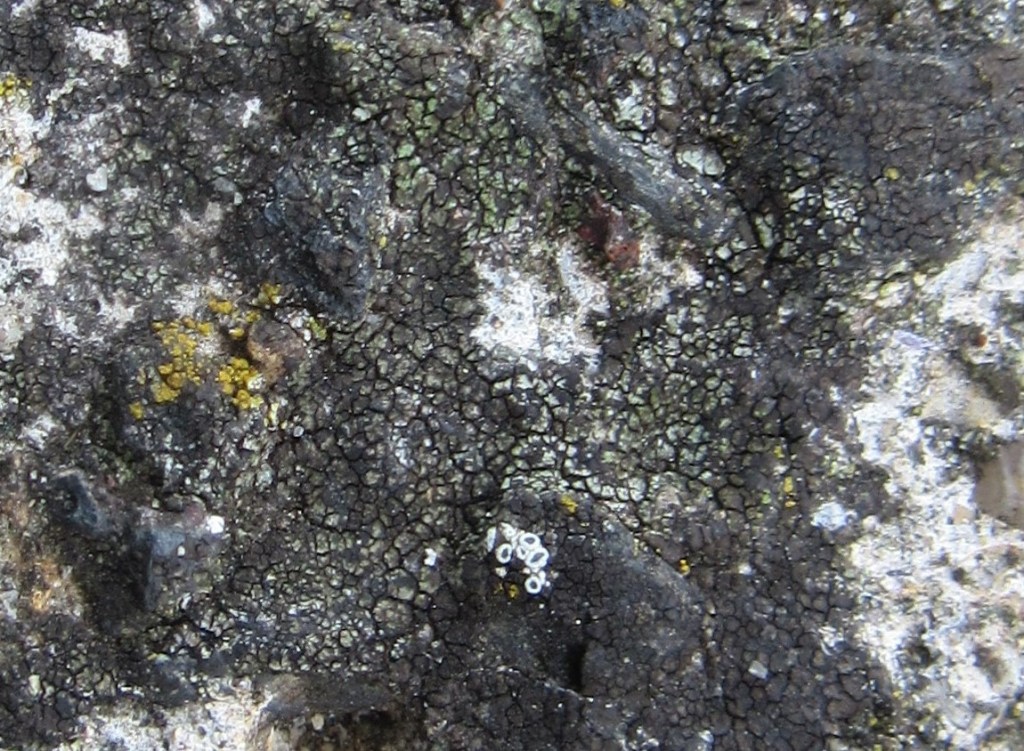
For anyone used to looking at birds, butterflies or bryophytes, it is hard to perceive that lichens are not one, but two organisms. To put it simple, a lichen is a symbiosis between a fungus species – the mycobiont – and a species of either a green algae or cyanobacterium – the so-called photobiont. As the name suggests, the photobiont is able to photosynthesize and provide sugars (Baron, 1999) to the mycobiont. In return, the mycobiont provides the photobiont protection. Yet, this is only a simplified rendition of this story. The exact nature of the lichen symbiosis is at the forefront of current research and it has been suggested that more than two organisms may be involved, including bacteria. When we see a lichen on a tree or rock, however, we usually only see the fungal partner. This begs the question where the photobiont is found in the thallus and how its presence can be made visible without cutting open the lichen.
When first starting to look at lichens, this symbiosis startled me. For example, when looking at the fruticose Ramalina fraxinea draping from a rowan I was only seeing the exterior of the lichen. In most lichen species the photobiont is hidden within the thallus. In the case of fruticose or foliose lichens, the green algae or cyanobacterium usually sits between the outer layers – or cortex. In the case of crustose lichens, the photobiont is squashed between the fungal cortex (‘skin’) and the bark or rock the lichen is attached to. Only in so-called leprose lichens like Lepraria lobificans, there is no protective outer layer of fungus so that, with a hand lens, the algal cells can be seen scattered between fungal hyphae.
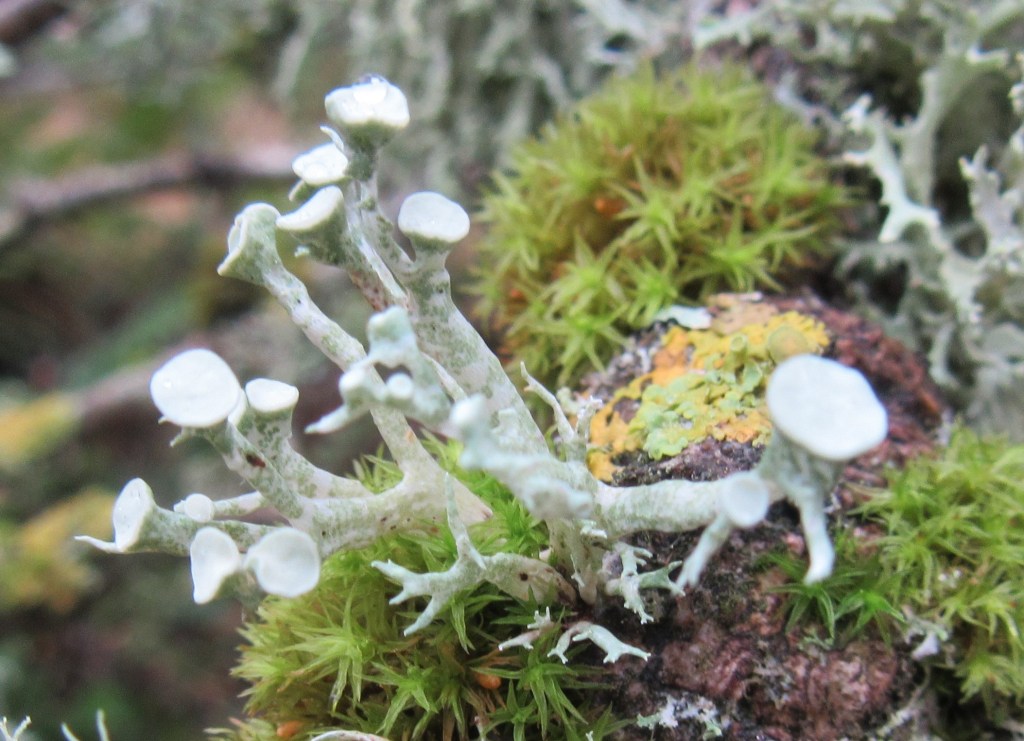
In most lichens, however, the photobiont is hidden behind the cortex. Yet, its presence becomes apparent when it rains or, for so-called chlorolichens that involve a symbiosis with a green algae, air humidity is high, and the lichen is able to absorb water. Lichen species like Physconia distorta, Parmelia sulcata and Ramalina fastigiata will turn distinctively green because the cortex becomes transparent to allow the green algae that sits below to photosynthesise.
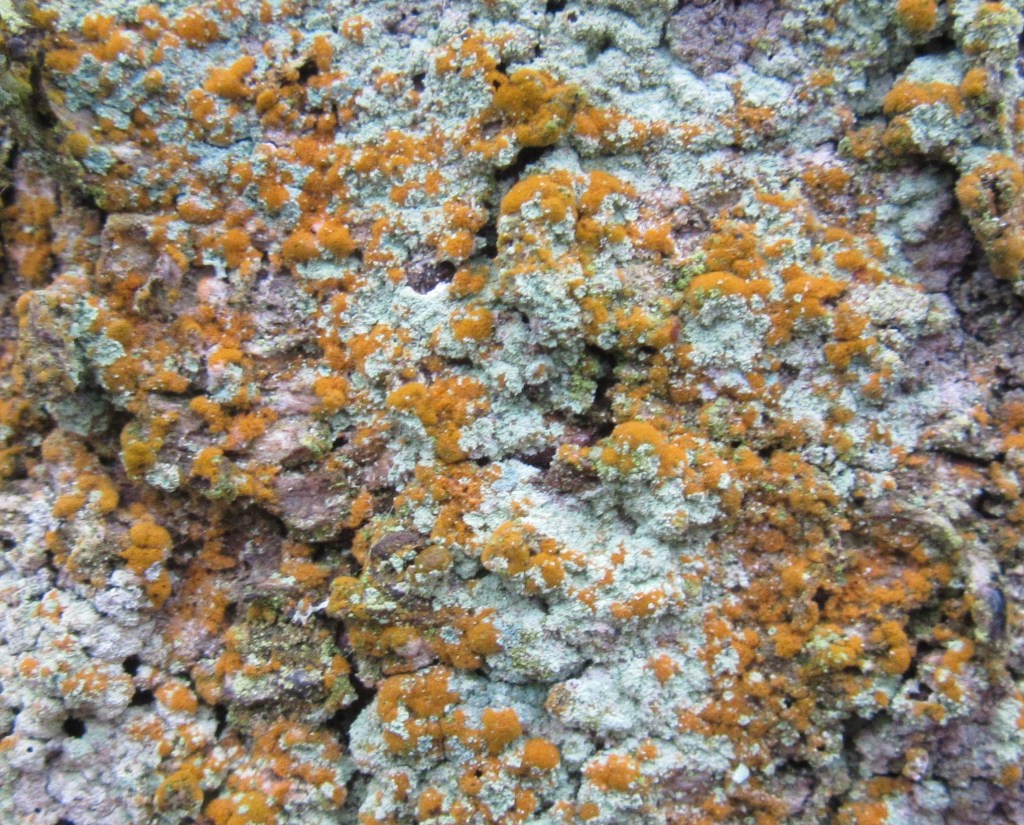
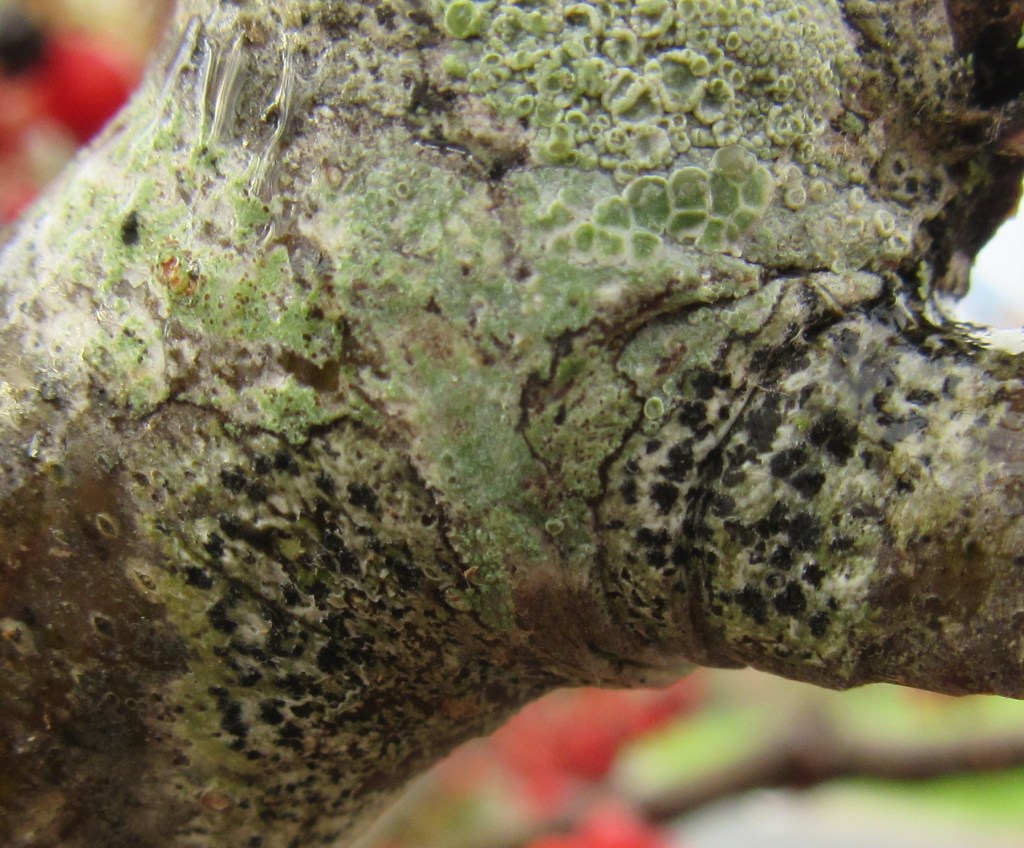
In the lichen symbiosis, the fungus is always a unique species that lends the symbiosis its name, while the photobiont species can match with more than one fungal species. There are a number of commonly found photobiont species, some of them only found in the lichen symbiosis. Around 60 % of lichen species involve a symbiosis with a unicellular green algae like Trebouxia, while around 10 % of lichen symbioses involve a cyanobacterium like Nostoc. That leaves roughly 30 % of lichen symbioses to involve a green algae that consists of a chain of cells, like Trentepohlia (Dobson, 2018). Rather confusingly, the green algae Trentepohlia is actually bright orange. As Trentepohlia can also be found living outwith the lichen symbiosis, many people are familiar with it is often found growing on shaded and damp substrata like rock or bark as orange fluff. As Trentepohlia prefers shaded conditions, it is generally found as the photobiont of crustose lichens that grow in shaded conditions as well. As such, it can be found in Anisomeridium polypori, Graphis scripta, Gyalecta jenensis, Lecanactis abietina, Opegrapha atra, Porina aenea, Schismatomma decolorans and Thelotrema lepadinum (Dobson, 2018). One of the commoner lichens in North-East Scotland in which it is found is Arthonia radiata, a lichen that I often find growing in pioneer communities on bark and on rowan. Even though it is not mentioned in Dobson as a diagnostic feature, it can be useful to scratch the surface of some Arthonia radiata as it will reveal the orange or yellowish hue of Trentepohlia below the cortex.
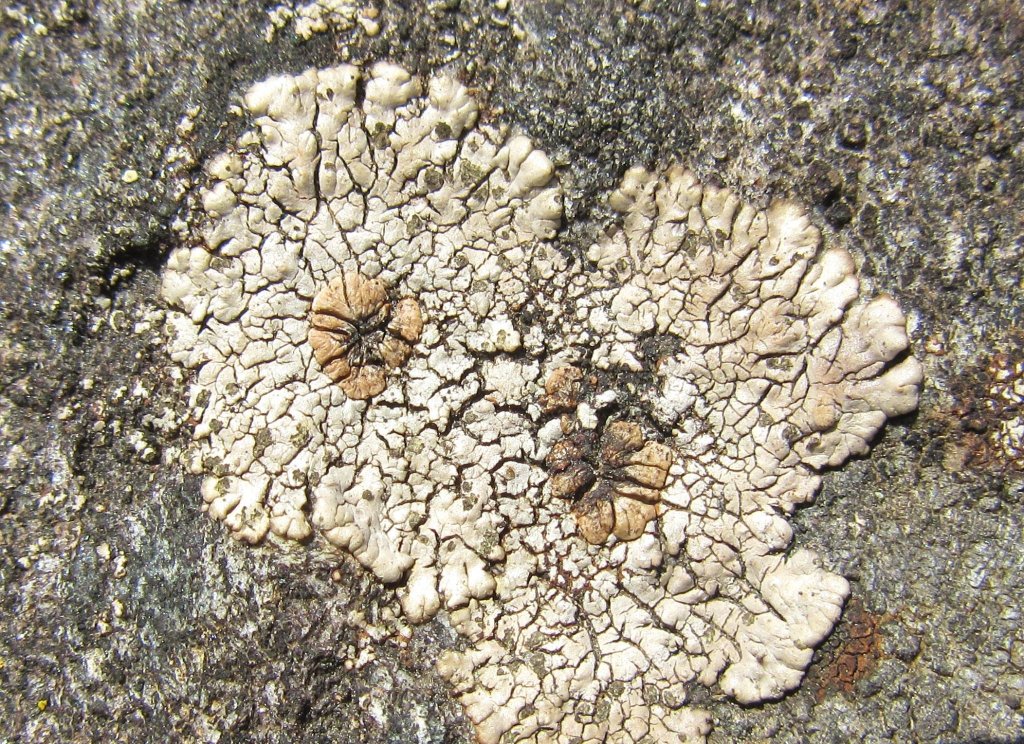
That said, a few lichen species quite literally wear their heart on their sleeve. Responsible for photosynthesis and the production of sugars, the photobiont can be seen as the engine in the symbiosis. In most cases, the fungi in the symbiosis is only able to form a symbiosis with one particular photobiont species, and the lichen then has particular environmental conditions that suits it best. As we have seen in the case of Trentepohlia, lichens containing this photobiont prefer shaded conditions. In a few cases, however, the fungal partner lays its eggs in two baskets, and forms a symbiosis with both a green algae and cyanobacterium. One line of thinking is that this may help with nitrogen metabolism in lichens (Gilbert, 2000), another line of thinking is that it could be a risk management strategy as the different photobionts may function optimally under slightly different environmental conditions. Lichens containing two photobionts may develop wart-like cephalodia. In the genus Placopsis, for example, the thallus itself contains the green algae Trebouxia, while on top of the thallus there are flesh-coloured cephalodia that contain a blue-green cyanobacterium. Though rare, and in Scotland mainly restricted to the genera Lobaria, Placopsis, Solorina and Stereocaulon, the presence of cephalodia at the very least visualises the presence of the photobiont in the lichen symbiosis.
References
Baron, G,. 1999. Understanding lichens. Richmond Publishing, Slough, England.
Dobson, F. S., 2018. Lichens. An illustrated guide to the British and Irish species. The British Lichen Society. Seventh revised edition.
Gilbert, O., 2000. Lichens. HarperCollinsPublishers, London.
Copyright text and images Petra Vergunst



